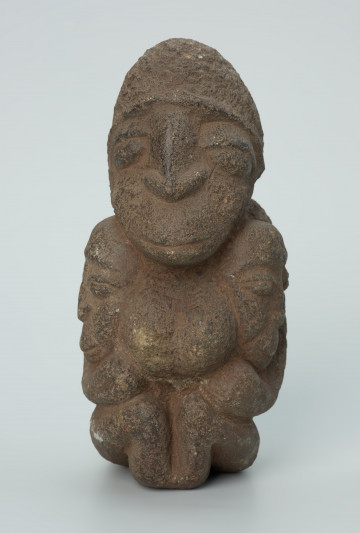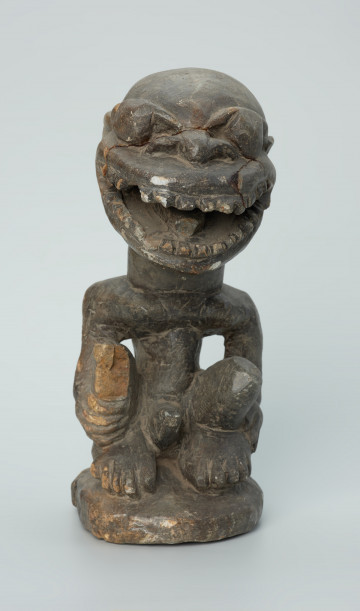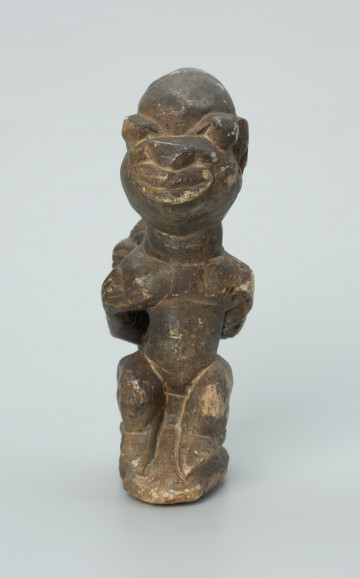
Figure of cult of dead
1901 — 1973
National Museum in Szczecin
Part of the collection: Stone figurines from West Africa
The most common carving material used in Africa is wood. Stone is used much less frequently. Associated with the cult of the dead, pomda or pomta (singular pomdo) sculptures were carved in steatite. Steatite, known as tailor's chalk or soapstone, is a soft microcrystalline rock with a high concentration of talc and a grey, pink or greenish colour. It is easily worked, so carvers making pomda figurines may have used tools to carve wood, such as a knife, a narrow-bladed blowpipe and an axe. The pomda figurines are not the product of their current users, the Kissi, a farming people known for their rice cultivation and who live in Guinea, Sierra Leone and Liberia. According to some specialists and experts in African themes, the stone sculptures were made by the ancestors of the Kissi - the Kirim and Bullom, ethnic groups that inhabited areas of Liberia, Guinea, and Sierra Leone in the past. Another theory is that they were the work of unknown people who had occupied the area now inhabited by the Kissi long before their arrival. The Kissi farmers find the pomda in the fields during agricultural work. They treat the figurines as returning ancestors. They place them on family altars and make offerings to them.
Katarzyna Findlik-Gawron
Author / creator
Dimensions
cały obiekt: height: 19,4 cm, width: 8,3 cm
Object type
figure
Creation time / dating
Creation / finding place
Identification number
Location / status

1901 — 1973
National Museum in Szczecin

1901 — 1971
National Museum in Szczecin

1901 — 1971
National Museum in Szczecin
DISCOVER this TOPIC
National Museum in Szczecin
DISCOVER this PATH
Educational path